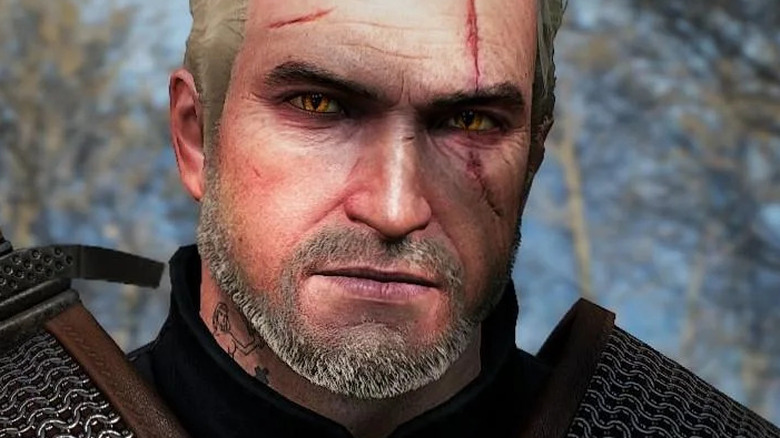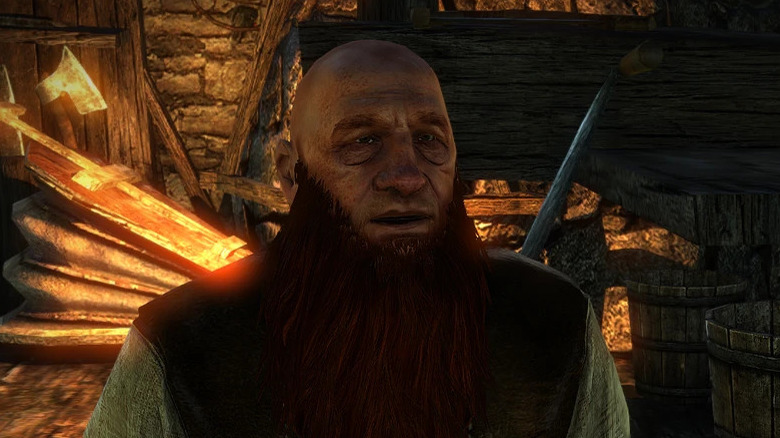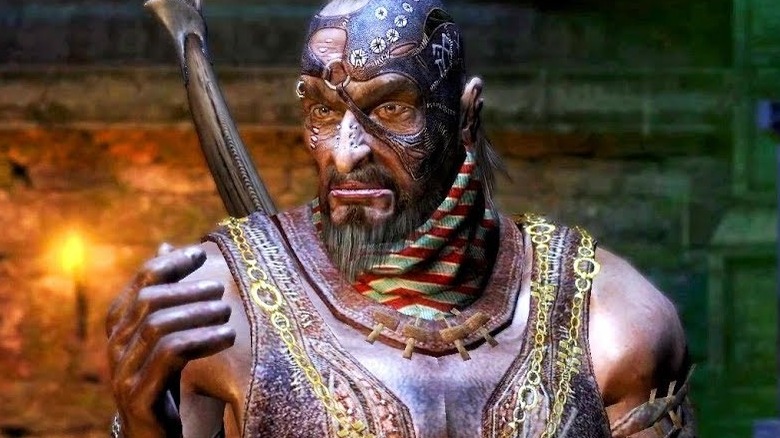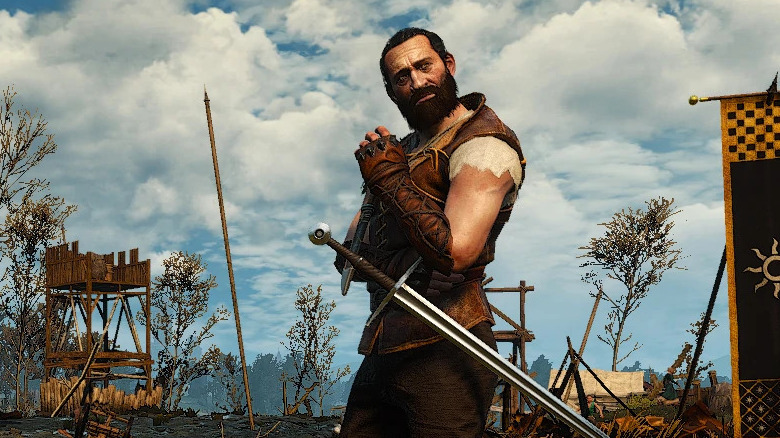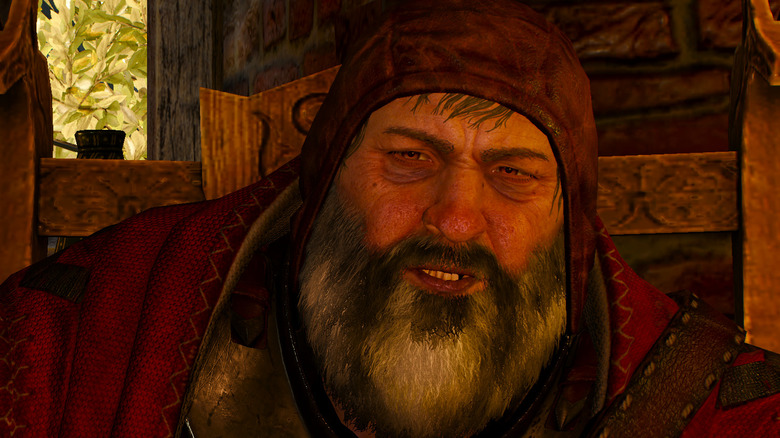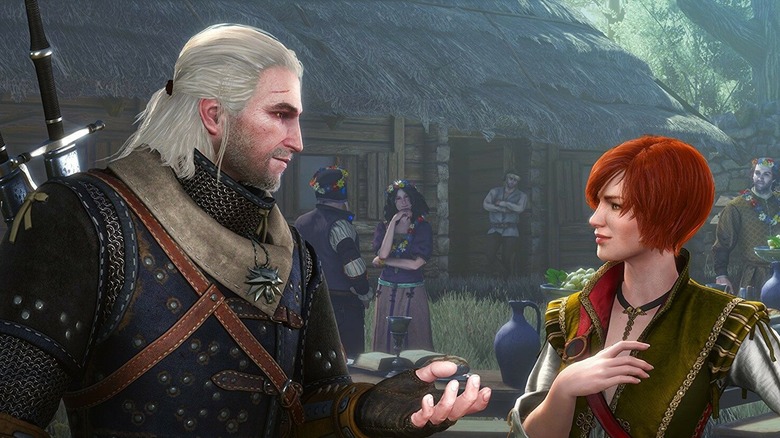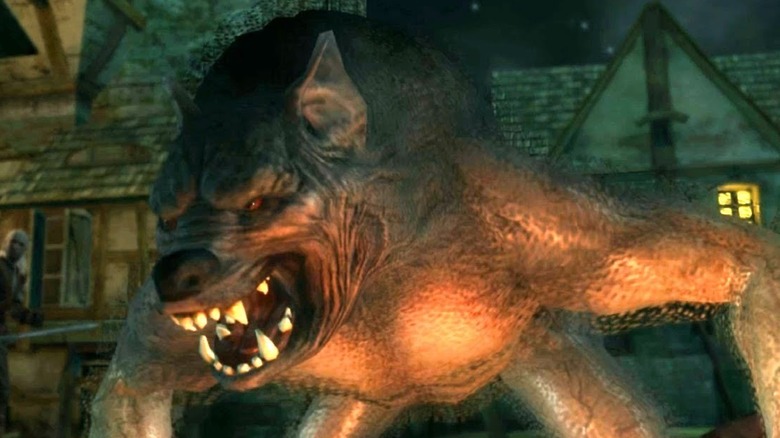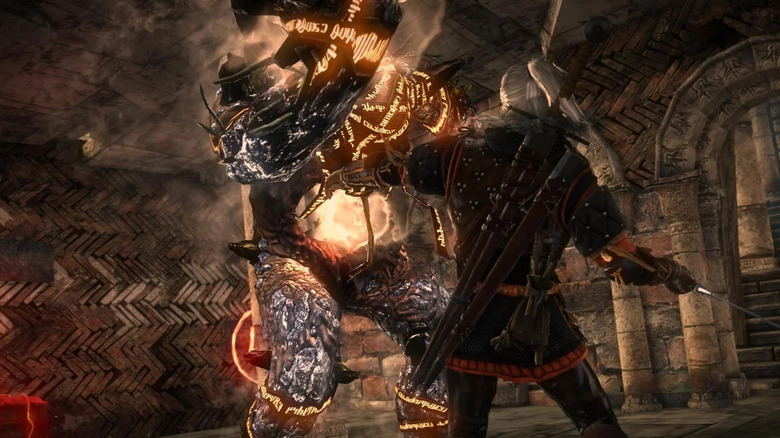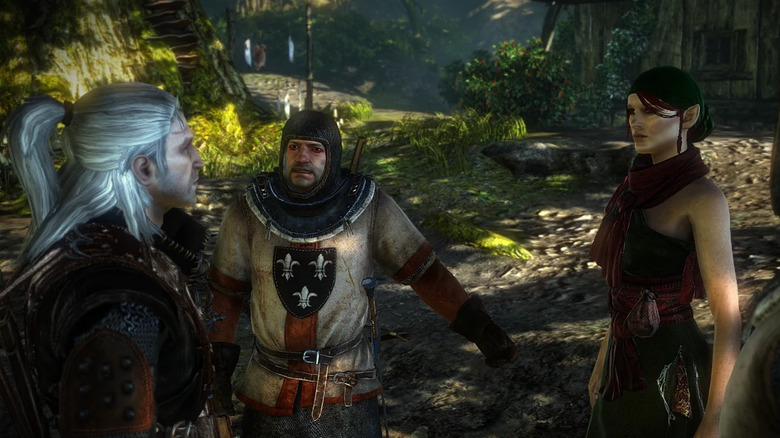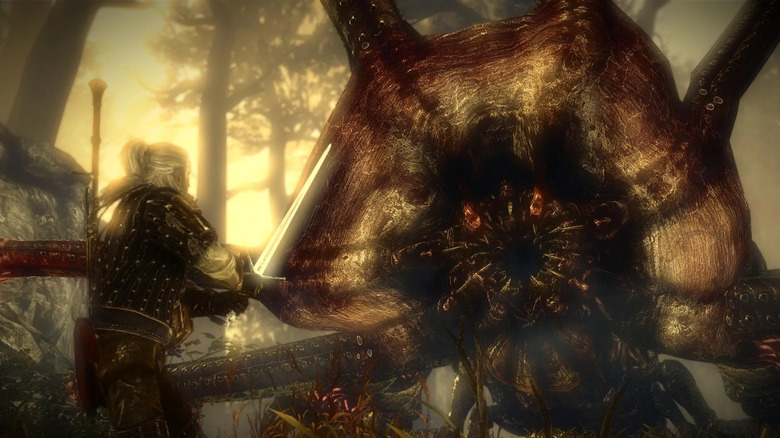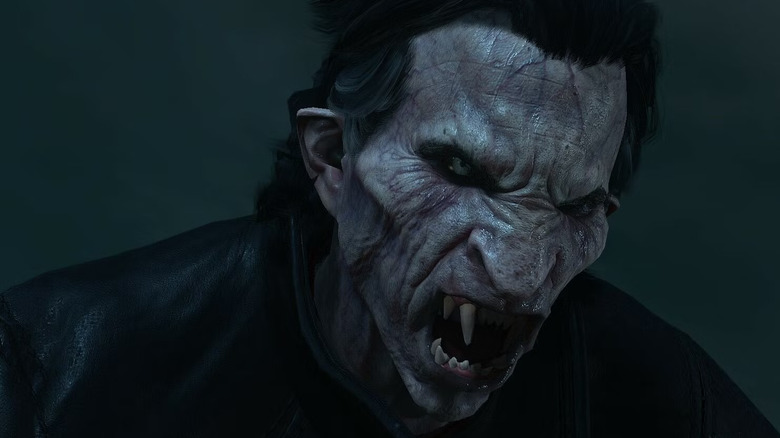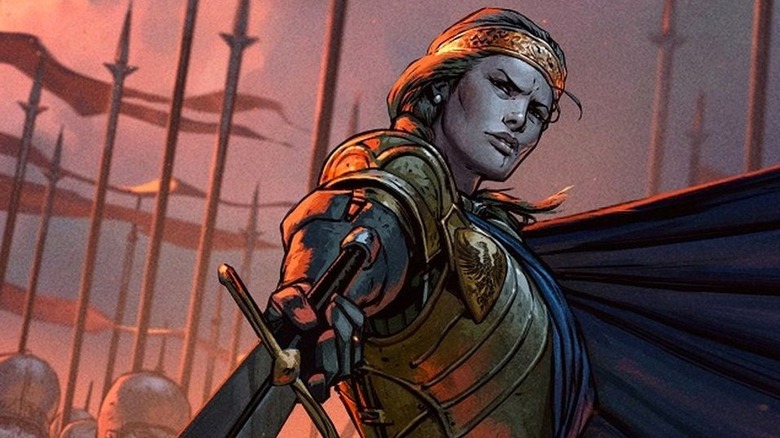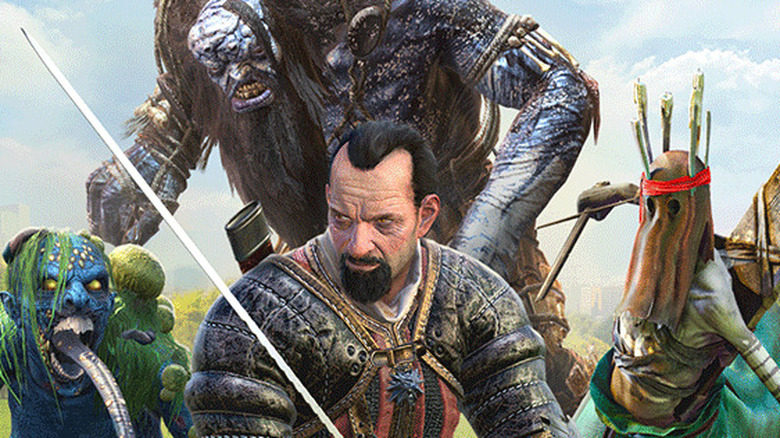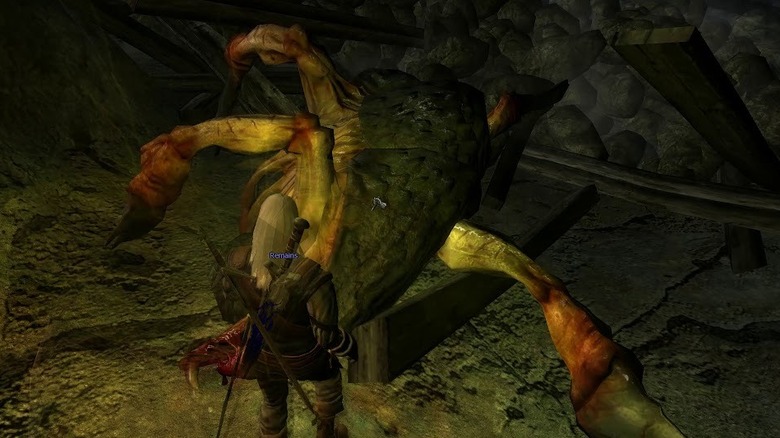The Witcher Quests That Are Practically Impossible
"The Witcher" has become one of the premiere fantasy RPG franchises in the video game industry thanks to its dark fantasy setting filled with horrifying creatures, complicated politics, loads of interesting details, and layered characters. This has helped the adventures of Geralt of Rivia gain a following across multiple systems and led to a sizable community of supporters. However, those fans are well aware that the series isn't always smooth sailing. In fact, numerous troublesome boss fights and quests throughout the core entries and spin-offs have seared themselves into the memories of disgruntled gamers.
"The Witcher" fans may expect the difficulty to stem from fighting terrible monsters or powerful sorcerers. This is the case much of the time, with players forced to invest hours into overcoming monster contracts, side quests, and bosses. However, other elements, such as unclearly explained mechanics, minigames, and time-based requirements, have also led to problems. Players have even found certain quests and encounters scattered across the franchise nearly impossible to complete.
Poker Face (The Witcher 2)
All of the mainline "The Witcher" titles have a minigame that helps bring the world to life and allows players to wager money in a fun distraction. "The Witcher 3" features the iconic collectible card game Gwent, while its two predecessors include dice poker. Dice poker follows simple rules, with players facing off against an NPC to roll dice to try and get matching numbers to complete poker hands like a full house.
The developers made a key change to the minigame between its two iterations. In the first "The Witcher," every match unfolds over multiple rounds. In contrast, "The Witcher 2" players only have one chance to win each game. Since the results of dice poker depend entirely on luck, this makes the quests that feature the minigame some of the most frustrating.
Knowing the different possible hands can help the player in dice poker, but they have no options to mitigate poor rolls or recover after losing a hand. All they can do is wager some money and cross their fingers, with sheer randomness deciding the victor. This results in players repeating matches and losing funds to complete quests that incorporate the minigame, and has led to plenty of player complaints throughout the years. While not impossible in the traditional sense, the forced slog may deter someone from achieving their objective.
Azar Javed (The Witcher 1)
"The Witcher 1" served as the first original project from Polish developer CD Projekt Red. As a result, some of the game's elements haven't aged well, leading fans to eagerly await "The Witcher" remake. One of the most chronic pain points is the title's combat mechanics. Players have complained across hundreds of forum posts about the game's rhythm-based combat system. Incredibly difficult bosses that can kill players for a single mistake further exacerbate this problem.
The primary antagonist, Azar Javed, has claimed a spot at the top of the list of the most brutal "The Witcher" bosses. An original character from CD Projekt Red, the sorcerer's abilities focus on conjuring and controlling fire. During their final encounter with Javed, an NPC accompanies the player. Even on normal difficulty, the NPC does little to help, as Javed can kill him in just a few seconds.
Javed's blinding attack, which has a large area of effect, and his ability to lock Geralt in an attack loop that continually knocks him down number among the top complaints. These two elements of his kit combined make learning the fight hard for new players, especially given how much his high damage attacks punish them for every misstep. You can make the battle easier by preparing the Willow potion ahead of time, but new players who don't take advantage of a guide rarely know to do so before taking Javed on.
Bitter Harvest (The Witcher 3)
Many of the quests in "The Witcher 3" focus on the impacts felt by the entire world as a consequence of the invasion of the Northern Realms by the Nilfgaardian empire. As players explore the map, they come across battlefields strewn with corpses, prisoners of war hanging from trees, and countless refugees that lost their homes to the conflict. Despite all of this, the biggest impact the war has on the player themselves comes from the side quest "Bitter Harvest."
"Bitter Harvest" sees Geralt of Rivia aiding a group of peasants search a field of dead bodies left behind by a recent battle to find their family members for funeral rites. However, where there are corpses in "The Witcher" there are Ghouls that hope to feast on them. So, rather than helping in the search itself, Geralt takes on the task of protecting those same peasants from waves of Ghouls, Alghouls, and Rotfiends as they try to ambush the mundanes.
This leads to one of the most infuriating fights in the early part of "The Witcher 3." The peasants will perish in two quick hits and they do very little to try and stay alive. The Rotfiends make this aspect even more rough, as they can kill the entire group because they explode when they die.
Family Matters (The Witcher 3)
The Bloody Baron is a standout character introduced in "The Witcher 3." He comes with lots of layers and complications, as players interact with him in an effort to track down his missing wife and daughter, only to discover that they fled his frequent nights of drunken abuse. The quest culminates in the Bloody Baron attempting to convert his dead child, a Botchling by this point, into a Lubberkin.
Geralt leads the Baron through the process and finds himself having to defend them both from numerous waves of Wraiths. The fight is especially hard and annoying because of how many Wraiths the player has to take on at a time. "The Witcher" fans will know that when fighting Wraiths they can only damage them when they are inside the ring of the Yrden sign, which is placed on the ground. This is difficult to do, however, when multiple Wraiths pile up on the player at a time, leaving them to react to several attacks at any given moment.
Evil's Soft First Touches (The Witcher 3: Hearts of Stone)
"Hearts of Stone," the first expansion for "The Witcher 3," sees Geralt coerced into a contract with Gaunter O'Dimm. However, it starts with Geralt accepting a quest called "Evil's Soft First Touches," which involves a run-in with the fan-favorite character Shani and an encounter with the brutal boss known as the Toad Prince. The aptly named massive toad towers over Geralt and presents an exceptional challenge, especially since it appears at the start of the DLC.
The Toad Prince's size and mobility make the fight particularly difficult. It frequently jumps around the arena as part of a move capable of killing the player if they don't dodge at the right moment even a single time. The Toad Prince also uses numerous ranged attacks that come out fast and can catch players off guard, especially while attempting to protect themselves with the Quen sign.
The Beast (The Witcher 1)
The first act of "The Witcher" culminates in a fight between Geralt and a terrifying monster known only as the Beast. While the main story and numerous side quests build up to the battle, it represents a large difficulty spike. The encounter tests everything a player has learned regarding the game's combat mechanics up to that point, making it a frustrating moment for new players.
First, the fight throws a large number of enemies at Geralt. The Beast spawns waves of Barghests to fight alongside it, which can overwhelm those who don't excel at dealing with groups. The combat system relies on the player performing strings of attacks by striking at a certain rhythm, a challenge made all the more difficult when the player has to do so against a small crowd of foes.
Contributing to the threat level, the Beast can cast a devastating effect known as "Pain." This momentarily stuns Geralt and wipes out half of his health, leaving him vulnerable to a quick death if any of the Barghests remain alive.
The Gargoyle Contract (The Witcher 2)
While Geralt works to clear his name after being accused of assassinating King Foltest at the start of "The Witcher 2," he makes sure to still get up to the usual witcher antics of monster contracts and side quests. One of the most challenging of these throughout the runtime is "The Gargoyle Contract." Players find the contract in Loc Muinne in the early parts of the third act regardless of whether the player chooses Roche's or Iorveth's path.
Gargoyles don't make many appearances in "The Witcher 2," but when they do they are memorable thanks to their immunity to certain status effects and the fact that they explode upon death. "The Gargoyle Contract" makes the situation even harder by requiring players to fight multiple foes at a time. This happens on top of dispelling runes spread throughout the battlefield to solve a puzzle using cryptic poems found in books. Figuring out the solution on one's own is incredibly difficult, and finishing the contract even with a guide is one of the hardest feats in the game.
Malena (The Witcher 2)
During the first act of "The Witcher 2," players run across a couple of belligerent guards about to execute an elf woman named Malena. Geralt can intervene in an attempt to save her, which kicks off a very trying quest. To clear Malena's name, Geralt has to delve into a nearby cave and find evidence of a dead man there. Of course, nothing is easy, so the cave also happens to be home to a nest of Nekkers.
This early in the game, players possess limited resources to draw on, which makes dealing with crowds of enemies especially difficult. Players have few healing options, almost no buffs, and likely weak gear. As a result, the Nekkers have an easy time swarming Geralt and delivering quick blows that can erase his entire health bar before players have the opportunity to react. Countless people have grown frustrated with the "Malena" side quest, especially given where it falls in the story.
The Kayran (The Witcher 2)
"The Witcher 2" players face the first boss, Kayran, in the small town of Flotsam. A kraken-like creature, Kayran has taken up residence in the town's docks where it terrorizes boats. Throughout act one, players complete various tasks to get ready for the fight, so the difficulty of the boss has some variation depending on how well the player prepares in advance.
Even if the player completes all of the preparations, the game still offers little guidance regarding how to actually complete the fight. This has led to gamers sinking hours into it without making any meaningful progress toward figuring out the solution, much less beating Kayran. Once the player understands how to finish the boss it becomes manageable, but even then the fight has its challenges. In addition to single-shot kills, getting Kayran's tentacles to land in Yrden traps to sever them can also be difficult because of how hard it is to see where they will hit.
Tesham Mutna (The Witcher 3: Blood and Wine)
The "Blood and Wine" expansion for "The Witcher 3" introduces players to Toussaint. A nation based on fairy tales and folklore, Toussaint finds itself at the center of a vampire crisis that Geralt naturally gets involved with. While playing through the main questline of the expansion, players make numerous choices that have an impact on how the story unfolds. One possible consequence of those decisions is a boss fight against the higher vampire Dettlaff during the quest "Tesham Mutna."
Given Dettlaff's status as a higher vampire, it comes as no surprise that defeating him requires a great deal of skill and persistence. He possesses high mobility, heals whenever he hits the player, and deals tons of damage to boot. The fight also unfolds over three different phases, which forces the player to adapt to new attacks and effects that maintain the difficulty throughout the encounter. It is no wonder than many fans consider it the hardest fight in the entire game.
BoneBreaker Final Battle (Thronebreaker: The Witcher Tales)
"Thronebreaker: The Witcher Tales" serves as a single-player spin-off of the standalone "Gwent," which developers based on the popular card game from "The Witcher 3." In "Thronebreaker," players lead an army as the Queen of Rivia, Meve. A collection of cards represents the player's forces, which they can then build decks with. The title also features multiple difficulty levels that influence the point values of the cards, with Bonebreaker functioning as the highest difficulty setting.
While anyone playing on Bonebreaker should expect a decent challenge from the experience, many players have found the game's final battle almost impossible on this difficulty. The fight forces players to re-invent their entire deck to counter it in a specific way, or they need to get incredibly lucky. Some people have reported only being able to win through the enemy AI making mistakes, like buffing the player's cards instead of their own. However, many fans also opt to just lower the difficulty for the final conflict to save themselves the time required to finish it.
Sword and the Stone (The Witcher: Monster Slayer)
Mobile spin-off "The Witcher: Monster Slayer" takes cues from the break-out success of "Pokémon Go." The game allows players to make their own witcher who they can then play as while walking around in the real world to complete narrative quests, fight monsters, and upgrade their gear depending on their geographic location. While the game will shut down in June 2023, the quest "Sword and the Stone" has ensured it will have at least some legacy.
One of the most difficult quests in the game, frustrated players have fully documented "Sword and the Stone." The mission sees the player working to get their hands on an iconic sword that grows more powerful when used during the night. A challenging aspect of this stems from the narrow timeframes players have to complete the requirements. The first objective only has a 40-minute window at dusk, followed by a 40-minute window at dawn to complete another objective.
Players actually have to go out into the world to complete these objectives during the specific timeframes, requiring them to get up early or adjust their schedules. After satisfying both requirements, players also have to fight a Stone Golem that deals extreme amounts of damage even to high level players with fully upgraded gear.
Kikimore Queen (The Witcher 1)
To complete the Kikimore Queen boss fight in the first "The Witcher" game, players can't just hit their foe with a silver sword over and over again. Instead, the developers set up the encounter for gamers to use the Aard sign to keep the Kikimore Queen back while also using it to break the supports within the mine to cause a cave-in to crush their opponent. Even if the player understands the intended solution, the plan remains difficult to execute thanks to the title's clunky controls and Geralt's slow sign cooldown.
"The Witcher" doesn't do a great job of communicating how to defeat the Kikimore Queen, leaving many players guessing to find the answer. The Kikimore Queen further complicates this by consistently killing Geralt with a single hit. While the creators didn't want gamers to take down this threat through conventional means, some have managed to do so — a grueling challenge that requires perfect execution to avoid getting caught by a one-shot kill.

